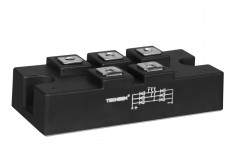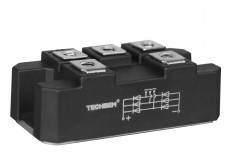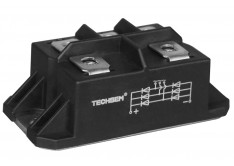Bridge Rectifiers
-
MDS150-16-221H5
Bridge Rectifiers
VRRM: 1600 (V)
ID: 150 (A) VAT not applicable
VAT not applicable
excl. Shipping Cost -
MDS150-8-221H5
Bridge Rectifiers
VRRM: 800 (V)
ID: 150 (A) VAT not applicable
VAT not applicable
excl. Shipping Cost -
MDS200-12-221H5
Bridge Rectifiers
VRRM: 1200 (V)
ID: 200 (A) VAT not applicable
VAT not applicable
excl. Shipping Cost -
MDS200-14-221H5
Bridge Rectifiers
VRRM: 1400 (V)
ID: 200 (A) VAT not applicable
VAT not applicable
excl. Shipping Cost -
MDS200-16-221H5
Bridge Rectifiers
VRRM: 1600 (V)
ID: 200 (A) VAT not applicable
VAT not applicable
excl. Shipping Cost -
MDS200-8-221H5
Bridge Rectifiers
VRRM: 800 (V)
ID: 200 (A) VAT not applicable
VAT not applicable
excl. Shipping Cost -
MDS50-12-218H5
Bridge Rectifiers
VRRM: 1200 (V)
ID: 50 (A) VAT not applicable
VAT not applicable
excl. Shipping Cost -
MDS50-12-219H5
Bridge Rectifiers
VRRM: 1200 (V)
ID: 50 (A) VAT not applicable
VAT not applicable
excl. Shipping Cost -
MDS50-14-218H5
Bridge Rectifiers
VRRM: 1400 (V)
ID: 50 (A) VAT not applicable
VAT not applicable
excl. Shipping Cost -
MDS50-14-219H5
Bridge Rectifiers
VRRM: 1400 (V)
ID: 50 (A) VAT not applicable
VAT not applicable
excl. Shipping Cost
More information about bridge rectifiers
The bridge rectifier MDS series of R&D Electronics are so-called three-phase rectifier. Such rectifiers are electronic circuits that can convert three-phase AC to direct current. This is especially important when DC voltage is required for an electronic device, however, this device need to be operated with mains voltage.
For this purpose, the so-called power supplies in the simplest implementation can be used. These convert firstly mains voltage with a transformer to a significant lower AC voltage. A rectifier will be then applied, in order to transform them in the next step in the DC voltage.
Rectifier bridges are usually used for this procedure. By means of the bridge rectifier the power can be converted more efficiently. This efficiency is due to, among other things, that both the negatives and the positives, so both half cycles of the AC voltage are used in a rectifier bridge for the transformation of the alternating current into direct current. This can be achieved through the built-in diodes in a bridge rectifier. These diodes operate similar like check valve that allows flow in one direction only. The current flow is on one side only within the rectifier bridge. Thus it lost significantly less energy in the conversion.
The built-in diodes in the bridge rectifier are wired to a square circuit. For the efficient conversion two diodes connected in series are always used in the rectifier bridge for both half-waves.
In contrast to the half-wave rectifiers, the two half-waves of the alternating voltage can be shifted to DC voltage at a rectifier bridge. After the transformation the frequency of the ripple of the DC current on the output is exactly twice than the frequency of the input.
In order to curb this ripple on the output voltage a little, bridge rectifier will still have a electrolytic compensator. By this way it is readily possible to produce a constant DC voltage in the current flow. This process is also called "smoothing" because the pulsation is reduced at the output and the waves of the pulse can be smoothed in the truest sense of the word. The compensator will be charged during the time period in which the voltage increases in the rectifier bridge, and will be discharged when the voltage drops again.






